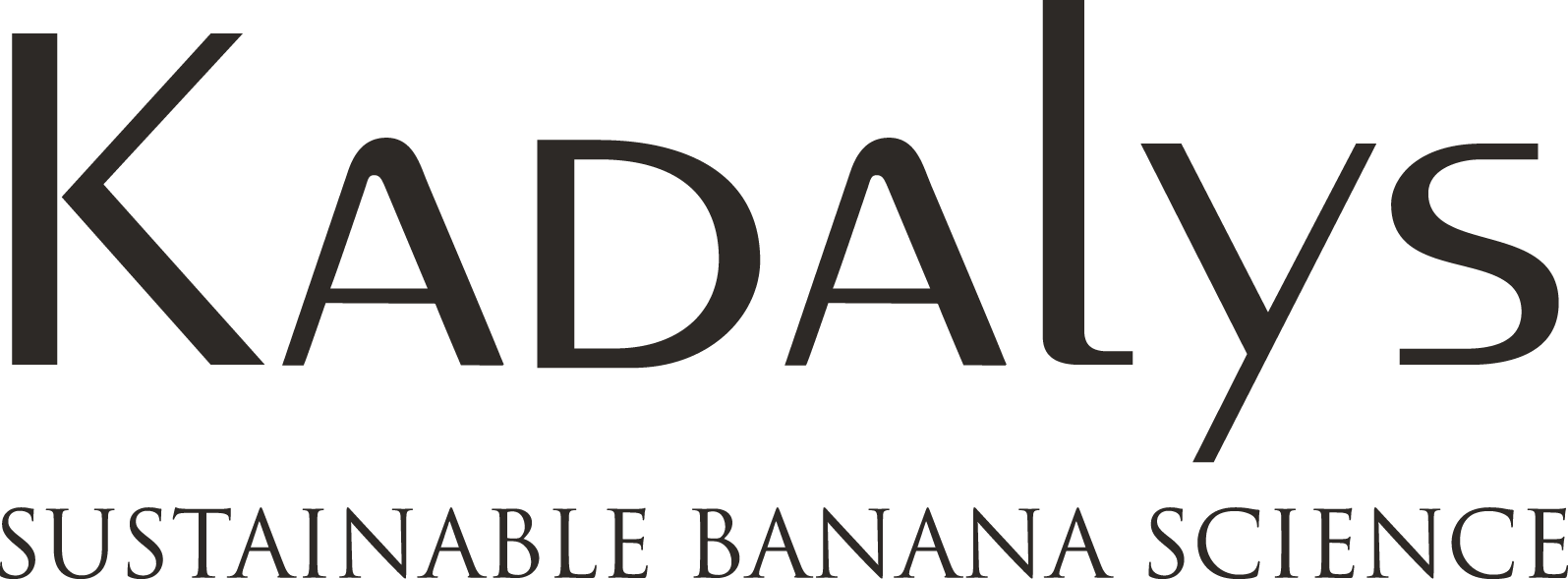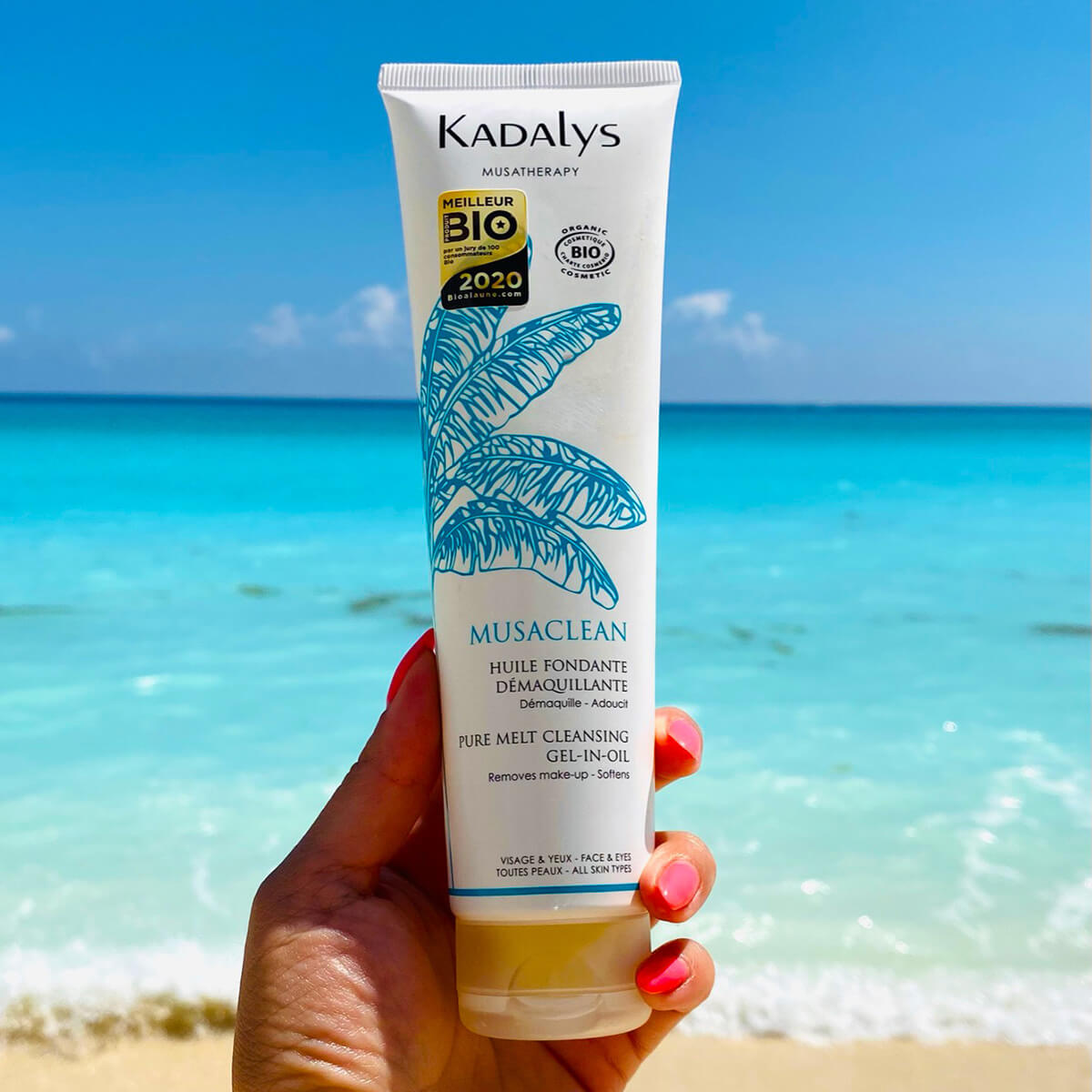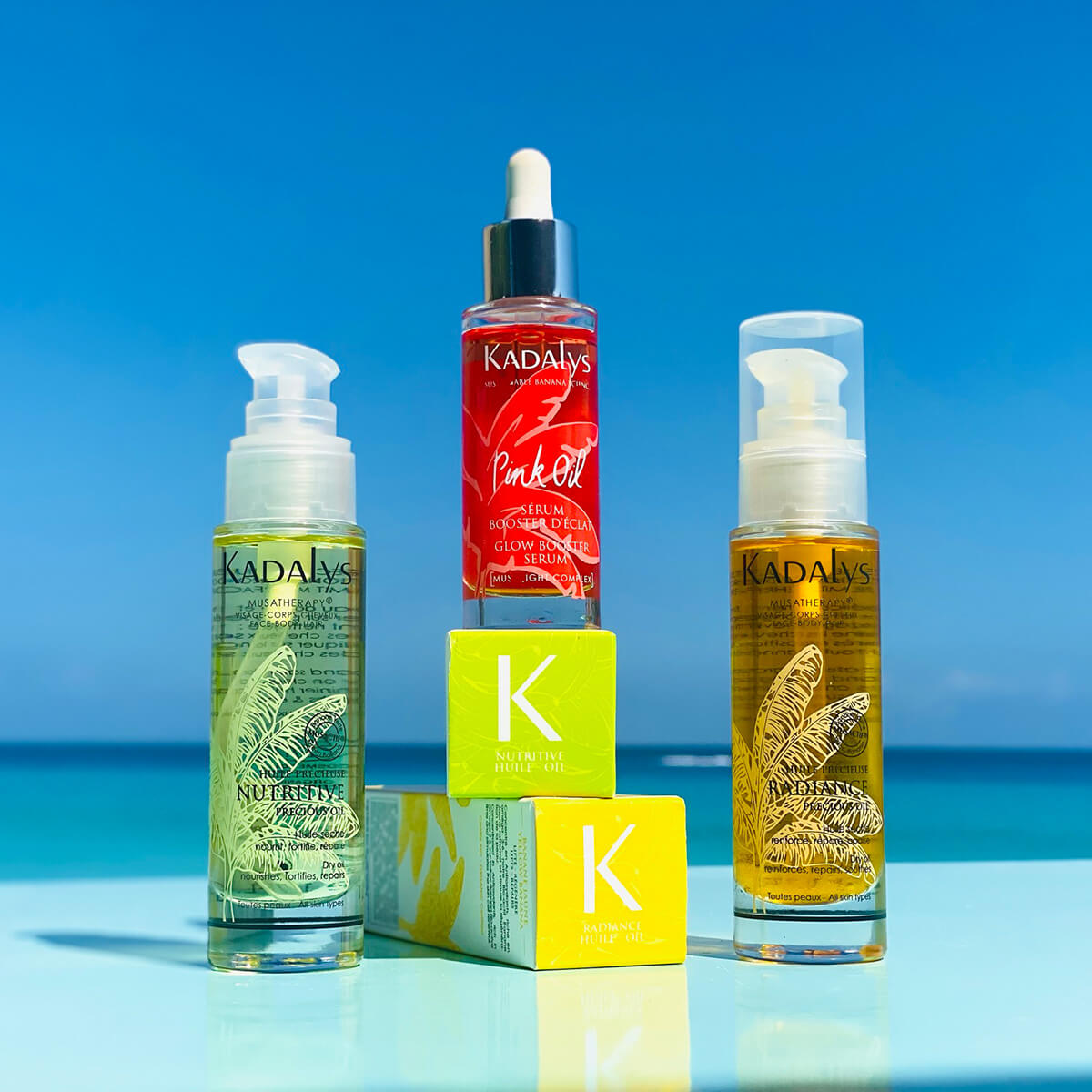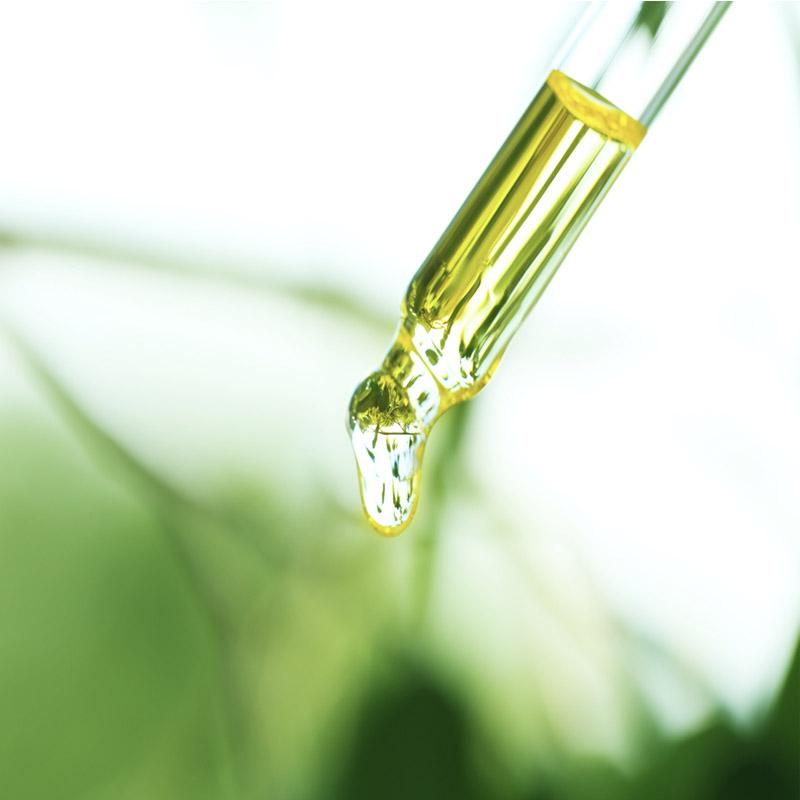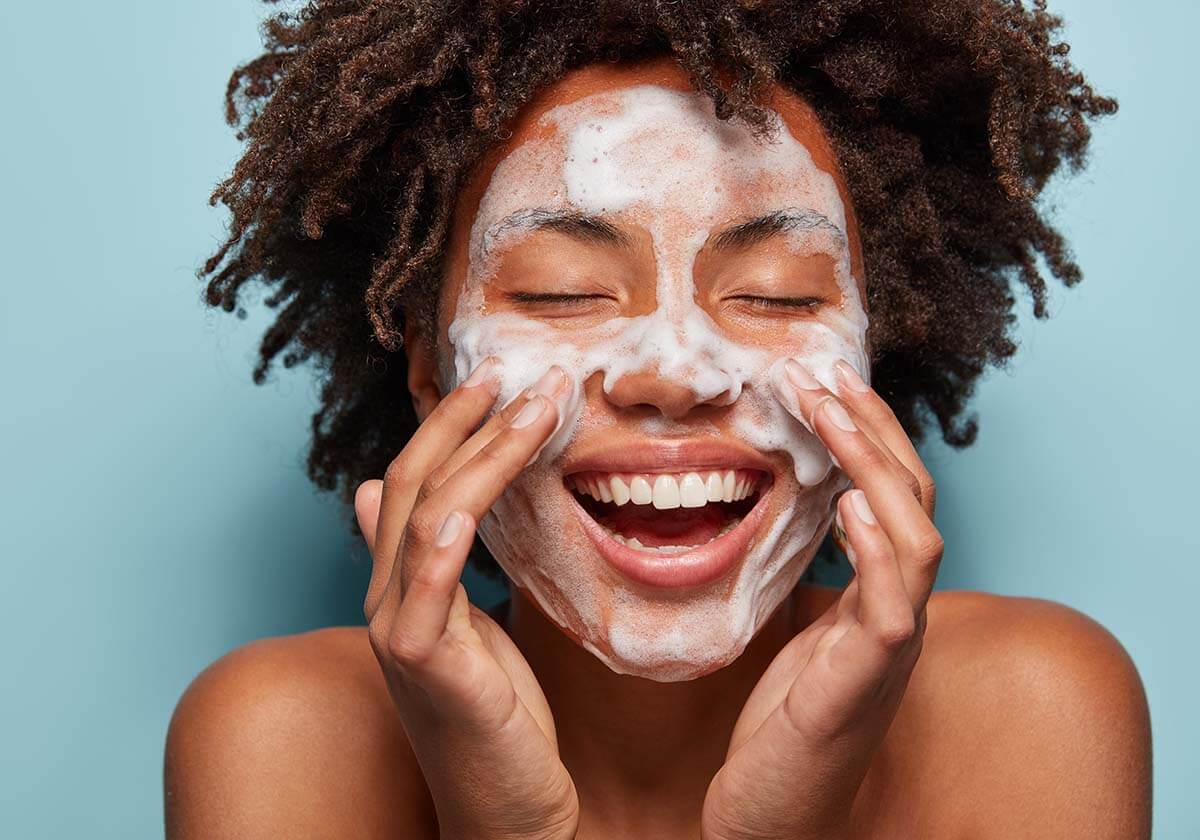
A Guide To Double Cleansing Your Face
Wishing you had truly clean, clear skin? Then double cleansing might be right for you. It's all the rage in beauty, and for a good reason!
This skin care technique can do wonders for your complexion, no matter your skin type.
But what is double cleansing, exactly? And more importantly, how do you do it?
Keep reading to learn everything you need to know about double cleansing and its benefits.
What is double cleansing?

As anyone who has ever worn makeup knows, it can be tough to remove all of it. Even if you use a makeup remover, you may still find yourself scrubbing to remove stubborn eyeliner or mascara. Enter the double cleansing ritual.
Double cleansing involves using two different types of cleansers to remove all traces of makeup, sunscreen, and other impurities from the skin. The oil cleanser breaks down makeup, sebum, and oil-based impurities. The water-based cleanser helps to remove any remaining dirt and oil.
Step 1
The first step is to use an oil-based cleanser (like a cleansing oil or cleansing balm) to break down oils and dirt on the skin's surface.
Cleansing oil is great for dissolving excess oil and sebum (the oily stuff our skin produces), sunscreen, and waterproof makeup, without stripping the skin of its natural oils. Because oil and oil-based substances attract each other, oil-based cleansers can lift dirt and oil from the skin effectively.
Furthermore, oil cleansers can help to hydrate skin and restore balance to your barrier. Unlike traditional soap or detergent cleansers, oils help to protect the natural lipid layer of your skin and the good bacteria that live there. Every skin type as well as mature skin can benefit from a healthier skin barrier so washing your face with a cleansing oil or cleansing balm is a worthwhile consideration.
In contrast, traditional cleansers often rely on harsh surfactants that can strip away oil and moisture, leaving the skin dry and irritated (and even causing barrier damage). For this reason, oil-based cleansers are the most common first step in a double-cleansing routine.
Step 2
The second step involves using a water-based cleanser to remove any remaining dirt and oil from the skin. This step ensures that the pores are thoroughly cleansed, helping to prevent breakouts.
A double cleanse is said to be beneficial because it removes more dirt and pollution from the skin than traditional cleansing methods. It also helps to prevent clogged pores and blackheads.
What are the benefits of double cleansing?

While washing your face twice may seem like overkill, the truth is that double cleansing can be very beneficial, especially if you wear makeup or sunscreen daily.
Here are three reasons to consider incorporating this two step cleansing ritual into your beauty routine.
1. More thorough cleanse
A double cleanse allows you to thoroughly wash your face, which is especially important if you wear makeup daily - regardless of your skin type.
While it may seem like an extra step, double cleansing can be more effective and efficient than single cleansing. The oil cleanser can dissolve oil-based dirt, makeup, dead skin cells, and excess sebum, without stripping the skin of its natural oils.
On the other hand, water-based cleansers are designed to remove water-based debris, such as sweat and dirt. As a result, two-step cleansing helps to leave the skin feeling clean and refreshed.
In addition to being good for those who wear makeup, double cleansing is effective for those who live in where pollution is more common. Since more than 95% of the world’s population lives in areas of unhealthy air, this means most of us (source: Health Effects Institute).
2. Help prevent breakouts
Double cleansing helps prevent acne, a big benefit for those with acne prone skin. By removing pore-clogging dirt, sunscreen residue, dead skin cells, cosmetics, and excess sebum, you can keep your pores clear and free from bacteria that can cause acne flare-ups and breakouts.
Sebum build-up is a leading cause of acne, so it's essential to use an oil-based cleanser to get rid of it. Two-step cleansing is a great way to avoid sebum-related breakouts if you wear a lot of makeup or tend to have acne-prone or oily skin.
3. Help other skincare products penetrate better
Two-step cleansing can help to improve the efficacy of subsequent skincare products, as it creates a cleaner canvas on which they can work.
That's because when you double cleanse, you create a clean slate for your serums, moisturizers, and night creams, allowing them to work more effectively.
So, if you want to help your nighttime products work their magic, try double cleansing.
Do I need to double cleanse?
Double cleansing every day might not be necessary if your skin isn't particularly oily or if you don't wear makeup often. A gentle, everyday cleanser might be enough to ensure your complexion is clean and healthy without over washing.
And while double cleansing is not a requirement for everyone, it can be beneficial for all skin types in specific cases.
Who benefits from double cleansing?

For example, suppose you wear a lot of makeup or use a mineral-based sunscreen (ones with active ingredients zinc oxide and/or titanium dioxide). In that case, two-step cleansing is the best way to ensure both the makeup and the sunscreen are removed.
Additionally, if you have incredibly oily skin and your regular cleanser isn't removing enough oil, using two gentle cleansers is better than using one harsh, drying cleanser.
If your skin feels tight or dry after cleansing, you should reconsider your cleanser and cleansing routine.
Tight, dry skin after cleansing is a sign of damage to your skin barrier and a possible sign you tend to over wash your skin. If you're worried about doing more harm, try using a micellar water for the second step in your evening cleansing ritual.
(Learn more about how to keep your skin barrier healthy and hydrated).
What if I have sensitive skin?
Similarly, dry and sensitive skin can benefit from the non-stripping makeup cleansing step that leaves a little moisture behind.
Instead of using one strong formula to combat sensitivity or overdrying, dry and sensitive types can try using two gentle steps. Alternatively, you could use the same cleanser twice to get the effects of a double cleansing routine.
People with dry or sensitive skin should always look for non-irritating, gentle formulas, regardless of the product.
How to double cleanse?

Ready to jump on the double cleansing bandwagon? Here's a step-by-step guide on how to double cleanse to help add this method to your skin care rituals:
First Cleanser: Oil-Based
Start with a cleansing oil or oil-based cleanser, such as our Cleansing Gel in Oil.
Apply a dime to a quarter-sized amount of product to your dry skin. Gently massage the cleansing oil with circular movements to remove oil-based impurities and dissolve all the makeup on the face and eyes. Gently rub your lashes between your fingers to massage the gel over your lashes and dissolve the mascara.
Gently massage for 30 seconds to 1 minute, using this time to help unwind from your day as you feel and see the makeup and impurities dissolve on your skin.
If using our Cleansing Gel in Oil, you next add water to transform the melting gel texture into a gentle milk cleanser. Massage the milky cleanser for another 30 seconds to remove the remaining traces of makeup.
Rinse with clear, warm water until all traces of the cleanser have been removed. Keep your skin damp for the next cleansing step.
Second Cleanser: Water-Based
Wash your face with a water-based cleanser. Look for a gentle cleanser, such as our Natural Cleansing Gel, that will not strip your skin of its natural oils.
Pour a dime or quarter-sized amount into the palm of your hands and lather with a bit of water. Then apply it to your damp skin with small circular movements, taking care around your eye area.
After 30 seconds or so, rinse off with cool or lukewarm water. Gently pat skin dry with a soft towel.
Another option for this second cleanser step is to use micellar water to remove makeup or dirt that remains after the first step. Micellar waters are especially good for those with sensitive or dry skin types because they are hydrating and gentle.
Micellar water will not be as effective at removing stubborn make-up so pairing it with a cleansing balm or oil makes for an effective cleansing routine that won't harm your skin.
How often should I double cleanse?
So how often should you double cleanse? It depends on your skin type, whether you have been wearing make-up or been outdoors, if your skin is feeling extra oily, or if you feel like your skin needs a deep clean.
If you wear makeup or have oily skin (or very oily skin), you might want to double cleanse every night. Those with acne-prone skin will find this two-step method a helpful additional to a an evening skin care routine and a great way to remove excess oil to keep skin clear.
For sensitive skin types or those with excessively dry skin, you might prefer double cleansing only when you feel your skin is especially oily. If you're unsure about whether two-step cleansing can work for your skin, consult a board-certified dermatologist for guidance.
No matter what your skin type is, though, double cleansing is always a good idea after wearing makeup or spending time outdoors.
The clean conclusion
When it comes to cleansing your skin, there is no one-size-fits-all approach. The double cleanse method has become popular for achieving clean, clear, and glowing skin.
There are many benefits of double cleansing. This two-step process helps to remove all traces of makeup, dirt, and oil from the skin, leaving it feeling refreshed and clean. It can be a good evening routine for all skin types if done correctly and with gentle cleansers.
In addition to removing impurities, double cleansing can help unclog pores and improve the overall appearance of your skin.
Combining an oil cleanser and a more traditional water-based cleanser is a powerful duo that can help you achieve a clear and glowing complexion.
So, if you're looking for a way to take your skin care routine to the next level, the double cleansing method is worth considering.
Keep Reading To Learn More
10 Most Common Face Washing Mistakes
